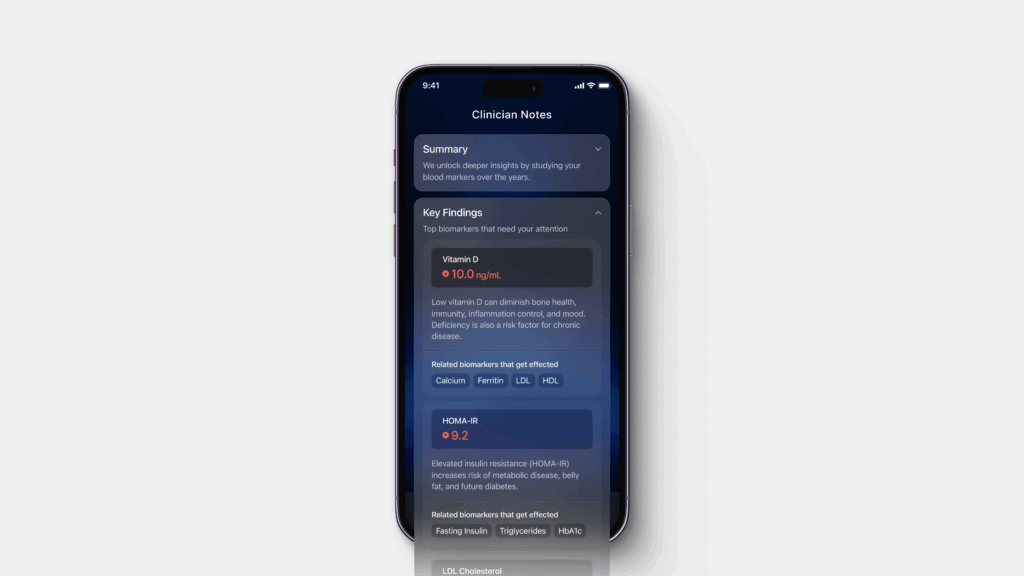Most of us rely on coffee to get through the day. It’s the first thing we reach for in the morning, the go-to fix before a meeting, or the much-needed push during that 4 PM slump.
And for a while, it works. Focus sharpens, energy lifts, and everything feels just a little easier.
But then comes the dip. The fog returns. You’re tired again – sometimes even more than before. So what’s going on?
The real reason lies in how caffeine and adenosine, a molecule in the brain that builds sleep pressure, interact.
Caffeine doesn’t actually give the body more energy – it just blocks the signal that says it’s tired. Once that effect wears off, all the built-up adenosine rushes in, and that’s when the crash hits.
This article unpacks the science behind that cycle, explaining how caffeine and adenosine work, why the crash happens, and how to use caffeine more strategically for sustained energy and focus.
New launch: Ultrahuman dynamic Caffeine Window tracking
Highlights
- Caffeine does not provide energy – it acts by blocking adenosine receptors in the brain.
- The post-caffeine “crash” results from accumulated adenosine binding once caffeine dissociates.
- Chronic caffeine intake leads to upregulation of adenosine receptors, reducing its efficacy.
- Disruption of adenosine signaling can impair slow-wave sleep and recovery processes.
- A 7–14 day cessation period allows adenosine receptor density to normalize, restoring sensitivity.
What is adenosine?

Adenosine is a compound that builds up in the brain as a result of your body burning energy throughout the day. It’s a byproduct of ATP (adenosine triphosphate), the molecule your cells use for energy.
The more energy you use – whether you’re thinking, moving, or even just staying awake – the more adenosine accumulates.
As adenosine levels rise, they bind to two key types of receptors in the brain: A1 and A2A.
A1 receptors are found throughout the brain and generally work to suppress wakefulness by slowing down neural activity.
A2A receptors are especially concentrated in the basal ganglia, a part of the brain involved in movement, motivation, habit formation, and reward. These receptors also play a key role in inducing sleep initiation and relaxation.
Together, this binding creates a growing sense of sleepiness, known as sleep pressure – a natural biological signal that helps your body wind down.
By bedtime, adenosine levels are typically at their highest, helping you fall asleep and stay asleep through the night. This is the adenosine function that regulates your sleep–wake cycle.
How caffeine and adenosine interact
Caffeine works by blocking adenosine from binding to its receptors, delaying the brain’s natural signals for rest. But the effects go further.
The adenosine receptor caffeine interaction is what keeps you feeling alert, and it also triggers increased activity of other neurotransmitters like dopamine and norepinephrine.
As a result, caffeine doesn’t just fight off drowsiness, it can also improve mood, sharpen focus, and boost reaction time in the short term. (1)
This surge in neural activity creates the perception of energy, even though caffeine doesn’t supply the body with any actual fuel.
Over time, the brain adapts. With regular caffeine intake, it may produce more adenosine receptors to compensate for the constant blockage.
This reduces caffeine’s overall impact and contributes to tolerance, so the same dose feels less effective.
But the full effect of that adaptation only becomes clear when the caffeine begins to wear off.
What’s behind the caffeine crash?

While caffeine masks tiredness, it doesn’t stop the body from producing adenosine. It simply holds the signal at bay.
As the caffeine wears off and unbinds from receptors, adenosine, now built up in the background, rushes in all at once.
The result is a sharp spike in sleep pressure, leading to a noticeable crash – fatigue, mental fog, low mood, or irritability.
This rebound effect is often stronger in people who consume caffeine regularly or in large amounts.
In some cases, the sudden drop can even trigger withdrawal symptoms, especially if the brain has adjusted by increasing its adenosine receptor count over time.
This is why a caffeine crash happens. It isn’t random, it’s a delayed response to a biological signal that’s been waiting to land.
Caffeine tolerance
With consistent caffeine intake, the brain doesn’t just sit back. It adapts.
To counteract caffeine’s constant blocking of adenosine, the brain may increase the number of adenosine receptors – a process known as upregulation.
This is the key caffeine tolerance mechanism, where more caffeine is needed over time to achieve the same level of alertness, and the window of effectiveness starts to shrink.
As tolerance builds, the short-term benefits become harder to access, but the crash doesn’t go away.
In fact, with more receptors now available, the rebound can feel even more intense once the caffeine wears off.
But adenosine isn’t just about tiredness, it’s a key part of how the brain manages rest and recovery.
As adenosine builds throughout the day, it increases what’s known as sleep pressure, which helps initiate deep, restorative sleep.
During this slow-wave sleep phase, the brain clears waste, consolidates memories, and resets neural circuits.
When caffeine chronically interferes with this system, especially in the afternoon or evening, it can lead to lighter, more fragmented sleep, even if total sleep time looks normal.
That means less effective recovery, reduced mental clarity the next day, and a gradual erosion of baseline focus and performance.
In other words, blocking adenosine repeatedly doesn’t just delay sleep, it disrupts the very processes that restore energy and cognition.
Can you reset your adenosine system?

The good news is that you can reset your sensitivity to caffeine and rebalance your adenosine system. But it takes more than just skipping your morning coffee for a day or two.
Going caffeine-free for 7–14 days allows adenosine receptor density to gradually return to baseline. This break gives your nervous system time to recalibrate, so when you reintroduce caffeine, it actually works again.
Most people feel the effects of this reset within the first week, though withdrawal symptoms like fatigue, irritability, or brain fog may show up temporarily. (2)
But caffeine isn’t the only factor influencing adenosine metabolism.
Sleep quality is the most powerful regulator of adenosine buildup and clearance. Deep, uninterrupted sleep allows adenosine levels to reset overnight, making you more alert the next day – no stimulants required.
Morning light exposure helps too. Sunlight early in the day regulates your circadian rhythm, which syncs the body’s natural adenosine production and clearance cycles.
And emerging research suggests that intermittent fasting – especially overnight fasts of 12–14 hours – may support mitochondrial function and energy metabolism, indirectly aiding adenosine turnover.
If you’re looking to boost focus without overstimulating the adenosine system, nootropic alternatives like L-theanine or GABA agonists can be helpful.
These compounds promote calm, alert focus without blocking sleep pressure signals, making them ideal for those trying to reduce caffeine or manage tolerance.
Other options include Rhodiola Rosea, known for reducing fatigue and enhancing cognitive performance under stress, and Lion’s Mane mushroom, which may support memory and nerve regeneration – offering long-term cognitive benefits without overstimulation. (3)(4)(5)
Conclusion
Caffeine can sharpen focus and boost performance – but it’s not free energy. Its effects hinge on how it interacts with your body’s internal systems, especially adenosine.
The more you understand that rhythm, the smarter your caffeine habits can become.
Strategic use, not just more use, is what actually supports long-term performance. That means timing your intake to avoid disrupting sleep, recognizing when tolerance is building, and knowing when it’s time for a reset.
Building awareness around these patterns can help you get more out of caffeine, without the crash.
Tools like Ultrahuman can support this by helping you track your intake, sleep quality, and recovery metrics, so your energy works with your biology, not against it.
References
- Pharmacology of Caffeine – Caffeine for the Sustainment of Mental Task Performance – NCBI Bookshelf
- Caffeine Withdrawal – an overview | ScienceDirect Topics
- Effects of the Combined Supplementation of Caffeine and Rhodiola Rosea with Resistance Training on Lower Limb Explosive Power in Male Volleyball Players – PMC
- Neurotrophic properties of the Lion’s mane medicinal mushroom, Hericium erinaceus (Higher Basidiomycetes) from Malaysia – PubMed
- Nootropics as Cognitive Enhancers: Types, Dosage and Side Effects of Smart Drugs – PMC







